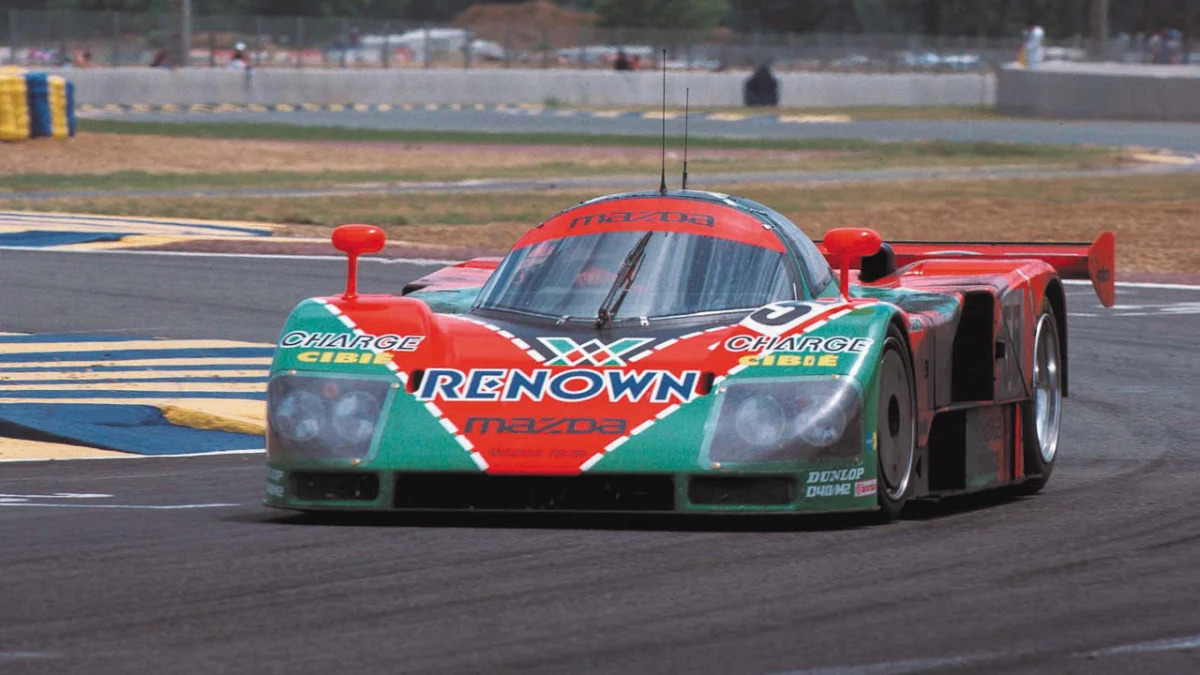Click image for a gallery of the Mazda Cosmo Sport
The good old internal combustion engine has been in service since the 17th century when Sir Samuel Morland rather impractically used gunpowder to drive water pumps. It was not until 1876 when Nikolaus Otto invented the modern four stroke engine that the internal combustion engine became practical for automobiles, however. Those same four cycles, intake, compression, combustion and exhaust are used in the Wankel rotary engine, although instead of the strokes of a piston the rotary creates it's cycles as a roughly triangular shaped rotor spins inside its housing. Doesn't make sense? Click here.
2007 marks Mazda's 40th in using the rotary engine. Our favorite application of it would have to be the Cosmo Sport, of course. Many of you will choose the RX-7 as a personal favorite. It's also alive in the current RX-8, which even sports a hydrogen-powered version for the alternative fuel crowd. And we'd be remiss if we forgot to mention the jaw-dropping four-rotor 787B racer that won the 24 Hours of Le Mans. Those of us who own, or have owned, a rotary engined vehicle and loved it can take this moment to say "thanks" to Felix Wankel and to Mazda for its commitment to the rotary. Forty years and going strong!
We've assembled four galleries of famous Mazda rotaries, including the Cosmo Sport gallery below, as well as galleries of the RX-7, RX-8 and 787B Le Mans racer.
[Source: Mazda]
PRESS RELEASE:
Mazda Celebrates the 40th Anniversary of the Rotary Engine Vehicle
Today marks the 40th anniversary of Mazda's first rotary engine powered vehicle. As of the end of April 2007, Mazda has manufactured approximately 1,970,000 rotary vehicles since production first began.
Mazda's Representative Director, Chairman of the Board, President and CEO, Hisakazu Imaki, said, "The rotary engine symbolizes Mazda. It was born from the tireless efforts of our past leaders and a corporate culture which embraces tough challenges. Keeping this proud tradition going forward, we will continue our research and development of the rotary engine in accordance with the Sustainable Zoom-Zoom plan that we announced in March 2007. As Mazda's next generation eco-engine, the hydrogen rotary engine holds great promise and, in fact, is already running on public roads. Mazda will aspire to adding new value to our rotary technologies by investing further in hydrogen rotary engine Research & Development."
Near the end of the 1950s, many automakers around the world dedicated considerable Research & Development resources for the development of the rotary engine (RE), but most discontinued their efforts because they were unable to surmount the formidable technical challenges inherent to the technology. Mazda alone persevered, eventually overcoming these obstacles and successfully achieved RE mass production. On May 30, 1967, Mazda commenced sales of the world's first dual-rotor RE car, the Cosmo Sport. Following this, Mazda introduced other RE vehicles to the market, including the Familia Rotary Coupe, Savanna, RX-7 and Eunos Cosmo. With a number of improvements in fuel economy and environmental performance over the years, sales of Mazda vehicles equipped with RE engines continue to be produced.
Mazda began its involvement in motor sports in 1968, following the release of the Cosmo Sport, when RE cars started participating in car races. In 1991, the Mazda 787B made rotary engine history when it became the only Japanese car ever to claim victory at the Le Mans 24 hour endurance race. Additionally, with over 100 wins in both the touring car series in Japan and in the International Motor Sports Association (IMSA) series in the United States, RE-equipped racecars have enjoyed a glittering record of success.
The RX-8 sports car was launched in April 2003. It is powered by the new generation, naturally-aspirated RENESIS rotary engine, which is more compact, powerful and environmentally friendly than its predecessors. Britain's specialist technology magazine, Engine Technology International, awarded the RENESIS its coveted International Engine of the Year award in 2003 as well as successive awards for its engine class in 2003 and 2004, to show its high regard for this engine.
Currently, Mazda is advancing with its development of the hydrogen RE, which emits no carbon dioxide (CO2), one of the gases responsible for global warming. Development of the hydrogen RE started in 1991 and has thus far resulted in the RX-8 Hydrogen RE, which in February 2006 became the world's first hydrogen RE vehicle to be commercially leased. Currently, seven hydrogen RE vehicles are on the road in Japan under commercial lease.





Sign in to post
Please sign in to leave a comment.
Continue